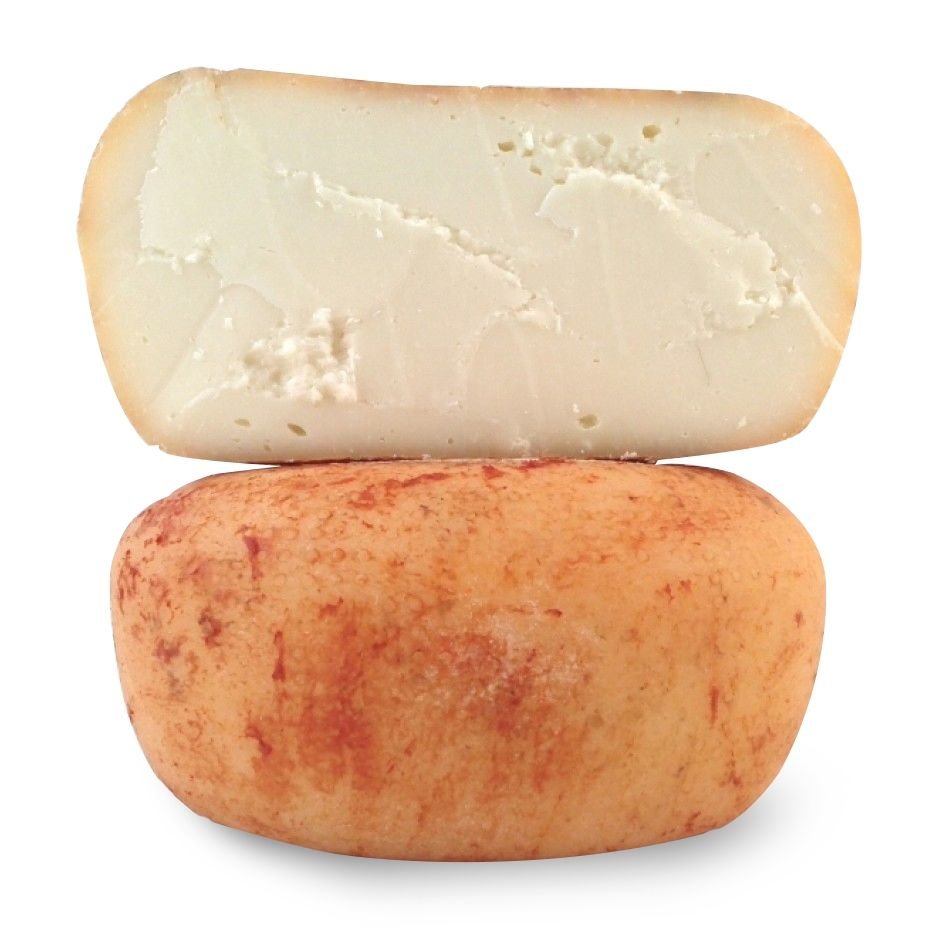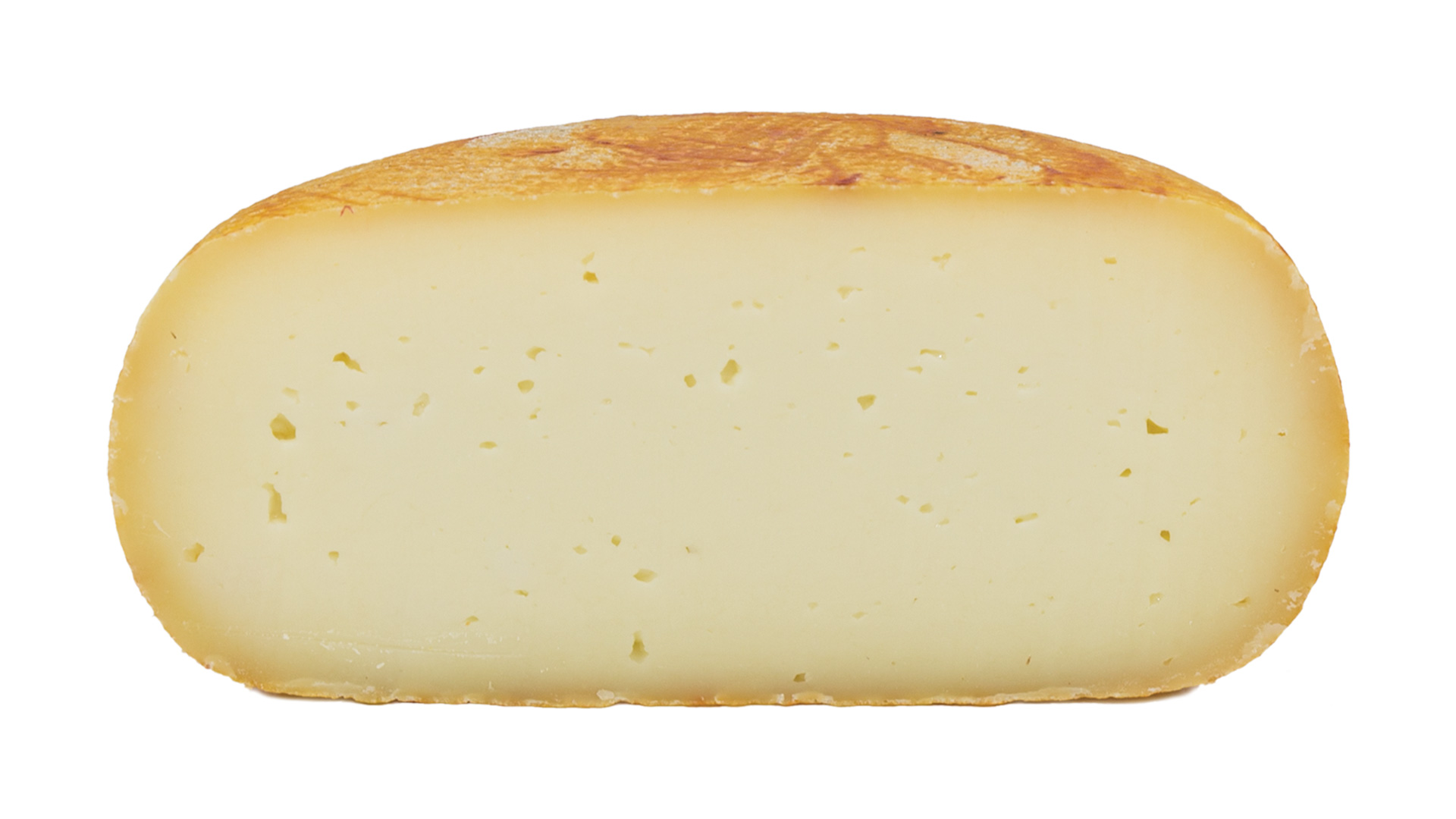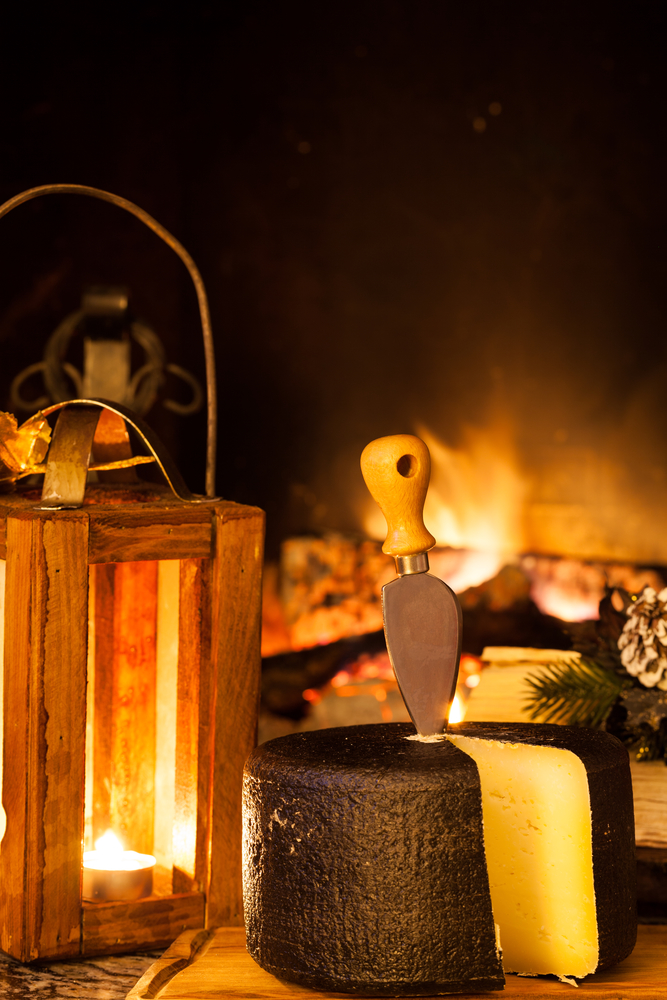A cheese that for centuries boasts a unique craftsmanship in the world,is the one called Pecorino of the Senese Crete that recently took the name Pecorino di Pienza or Val d'Orcia, both in the province of Siena.
Pienza is a small town located in the laughing Val d'Orcia (in ancient times called Contignano), a town that has preserved its typical medieval style intact.

This typical Tuscan cheese has a traditional oval shape and is produced with the milk of sheep that graze freely in places rich in fragrant herbs such as mint or radicchietto. The crust depending on the degree of seasoning varies in hues, so it can be yellow or reddish as a result of the oil and tomato treatment. The pasta of which the pecorino is composed is instead a shade between white and straw. The flavor is usually sweet, but with a spicy aftertaste.
For flavor optimization, the Pecorino of the Crete Senese requires a specific aging that ranges between 40 and 50 days,and for the production is essential of the renno of vegetable type such as thistle that knows how to give a sweet and bitter mix; in many cases it is wrapped in bay leaves sprinkled with oil.
Go to the source for a sacred cheese
The Pecorino of the Crete Senese is still produced in the same way today, and by sources that for their genuine rural characteristic make it an almost sacred cheese for the locals. Visiting a farm means being surrounded by a hundred sheep grazing and waiting for the daily milking that usually takes place around six o'clock in the morning.

Witnessing in religious silence the stages of processing is rewarding for the soul; in fact, it's all very interesting starting with milking milk even if knowing what the sheep eat and how they live is no less, especially in a world where so many foods are produced industrially.
For example, sheep that eat only wild herbs produce very strong milk from the point of view of texture, while those that are fed with specially planted cereals allow to produce cheeses with a delicate flavor and a softer paste. The Val d'Orcia cuts the southern half of Tuscany, and in the distance you can see many fields of freshly packed hay, as well as olive trees and tractors that stirred the earth filling the air with dust and turning sunlight into haze. Despite all the marketing of recent years, Tuscany still remains a land where agricultural resources allow to obtain enviable artifacts all over the world for taste and genuineness. For this reason, the Val d'Orcia has been awarded the title of UNESCO World Heritage Site.
The pairings of the Pecorino of the Senese Crete
The owners of the farmhouses that produce the tasty cheese handcrafted often offer tasting rooms in special tasting rooms, and this is really interesting as it provides useful suggestions regarding the aforementioned combination with other dairy products. It is also important to note that some small family-owned companies offer the Pecorino of Siena Crete with an original variation from the classic one; in fact, there is also the typology to wine with two fine wines such as Brunello di Montalcino and Nobile di Montepulciano. In this case the forms of Tuscan cheese are subjected to a process of aging and precisely in small barrels containing the aforementioned wine. In this condition they remain for a few months, so that the cheese acquires the aroma of wine and above all an intense and sweet taste. The ideal consumption of this must-based artifact is with a mix of mustards and local honeys.

However, it is also proposed as unseasoned; in fact, there is a tender and fresh version whose dough is buttery, and the taste of milk and ferments make it a particularly intense aftertaste. The taste tends to sweet compared to the seasoned pecorino,recommends pairing it with raw vegetables such as radishes to name one of the most famous of a vegetable garden. Another tasty way to taste it fresh is to smear it on bruschetta adding peppers sautéed in a pan and tomatoes cut into chunks. Alternatively, you can also opt for the traditional ones of Siena or bruschetta made from Tuscan bread whose clods must be charred. Once obtained, simply rub some garlic and add a drizzle of locally produced extra virgin olive oil.
The best wines to pair with the pecorino cheese of the Crete Senese
To appreciate in the best way the various tastes of pecorino, the ideale is good Tuscan wine:to give some examples you can opt for the Vernaccia di San Gimignano, that is a white wine produced by the vines planted in the hills of Lucchesia or for the white of Pitigliano. However, it should be pointed out that if these wines are more suitable for the fresh type of pecorino of the Crete Senese, there are also some reds that deserve to be mentioned since ideal to match the taste of this cheese in its variation compared to the traditional and centuries-old seasoned recipe. In this case just to stay on the subject you can choose a good glass of Orcia D.O.C. or a Chianti of the Senese Hills.
Finally for the classic pecorino,then seasoned and slightly spicy, you can opt for a good Montalcino Red, Montepulciano or even for a Morellino of Scansano just to name a few of the most famous.
On the sidelines we can therefore claim that the Pecorino of the Crete Senese is able to satisfy different palates and even the wine pairings are no less.
It will be nice then to plan a visit to this laughing Tuscan resort, once you have passed the most critical phase of the coronavirus pandemic, for those who want to take a dip in the past, and enjoy foods now far from the tables of the big cities.
#dreamingtuscany #istayathome
Image source: educazione alimentare, guffanti formaggi, spaghetti e mandolino










 Map
Map